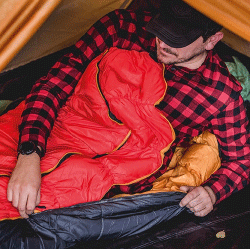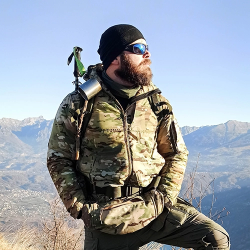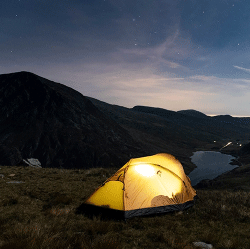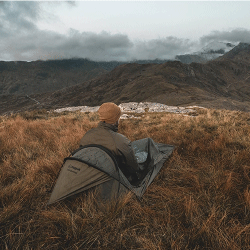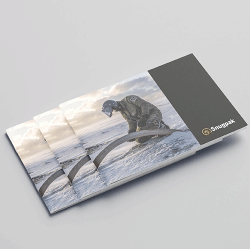
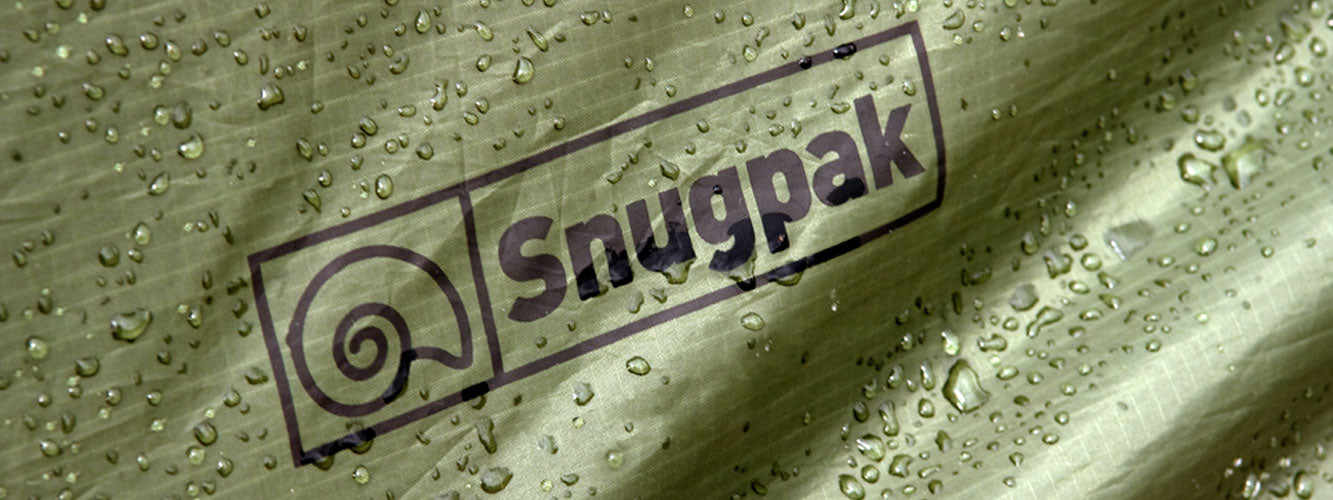
Understanding Wet Out – Humidity & Condensation
Regardless of what you wear over your Snugpak® Insulating layers, it may come as no surprise, that all PTFE garments will eventually ‘wet-out’ in sustained and heavy rainfall, or in warmer conditions when there is an increase in humidity. Wetting outis essentially a build up of condensation on the inside of (waterproof) layers that prevents evaporation and transportation of moisture to the atmosphere.
Humidity is the amount of invisible Water Vapour contained within the atmosphere around you.
There are two key elements to clothing wetting out; firstly, the ability for the waterproof (PTFE) layer to shed liquid water from the membrane, and this is best achieved with the application of a Durable Waterproof Repellant (DWR) on the outer clothing to prevent build up of water, allowing rain to bead and roll off the fabric. Secondly, the relative humidity and temperature between the inner and outer layers of clothing will affect the ability to transport water vapour (sweat) from clothing layers to the atmosphere. Most 2 and 3 layer PTFE Waterproof Garments have a DWR finish that beads water and prevents saturation of the exterior or face fabric. The PTFE breathable layer is protected by the face and interior fabrics. If the DWR wears off, in time, the external fabric will become saturated and prevent the PTFE membrane from transporting water vapour from inside the garment(s) to the atmosphere.Even if it is no longer raining, the relative humidity of the outer layer is 100% and prevents evaporation moving through the material. So even though the maintenance of your outer waterproof garment with regular application of DWR will prevent saturation of the face and PTFE layers becoming saturated, in heavy rainfall, eventually the accumulation of moisture inside the breathable layer will wet out your insulating layers; this is a good reason to use a synthetic insulation, such as those use in Snugpak® products, including Softie® Premier Insulation.
The Saturation Limit of Air is only 4%; This is expressed as 100% Relative Humidity.
The Relative Humidity of Air is defined as the ratio of water vapour to vapour pressure at a given temperature; so the relative humidity of air id dependant on both the total water content and the temperature. It is an important aspect of weather forecasting, and is indicative of rain, dew and fog. Any rise in the relative humidity of the atmosphere will increase the feels-like temperature as you are moving, as it inhibits the evaporation of perspiration as you walk. In simple terms, if you are wearing a Snugpak® Venture Series Smock, you will sweat through the breathable materials of the insulation and face fabric; by putting a PTFE waterproof garment over the top, you have increased the humidity between you and the atmosphere, hence why you will feel warmer, even though there is little in the way of insulation for the outer garment.
Wetting out occurs when the water vapour condenses on the inside of the waterproof layer, on the outside of the insulation layer; many a walker has removed their waterproof jacket only to find their mid-layers are wet; this is not a failure of the PTFE, you have simply gotten wet from the inside out.
Now here in lies the problem:
As your waterproof layers start to saturate and wet-out, more and more water vapour will condense on the top of the insulating mid-layers. In inclement weather and in colder conditions, you will now start to chill, as the water vapour condenses in the material fabric of your insulating layer(s). If insufficient or inappropriate layers are worn, and in less than ideal conditions, including increased wind speed or cooler ambient temperatures, the risk of hypothermia quick becomes a problem.
Your layering system should keep the layer next to your skin dry and move moisture into the mid-layers.
Here are a few things you can do to mitigate the effects of hypothermia:
1. Make sure you have a good wicking base layer, such as the Snugpak® 2nd Skinz Coolmax Long Sleeve Top, this will help move cold perspiration away from your skin and into the insulation layer.
2. In humid and wet environments, synthetic insulation if preferable to down insulation. When Softie® Premier gets wet, it will still retain its thermal properties and keep you warm (but wet!). Down insulation, feathers, clump together, losing their thermal properties, making you cold and wet.
3. If you have ‘pit-zips’ on your outer waterproof garment, open them up to allow excess water vapour to escape, allowing the waterproof membrane to work more efficiently.
4. Sweating promotes dehydration, which can lead to additional problems, as well as burning extra calories exacerbating hypothermia. Keep drinking fluids, preferably warm drinks if you have them, even if you are not feeling thirsty.
5. If you are having problems staying warm, stop moving and seek shelter immediately; even if this means putting up a shelter, or tent, and getting out of the elements. In circumstances like this, wind cools you down a lot quicker than just being wet. Try to dry out your layers if you can and have a hot brew; eventually the rain will stop!
6. Carry spare and additional base and mid-layers for insulation. The perfect compliment to the Snugpak® Venture Smock are the Sleeka Salopettes Reversible Full Leg Zip. While these too may eventually become wet through and saturated, they will help retain body heat and prevent the onset of hypothermia. The key to insulation is to disrupt the transfer of warm air from the insulating and base layers; wind proofing is absolutely essential, even in warmer weather.

